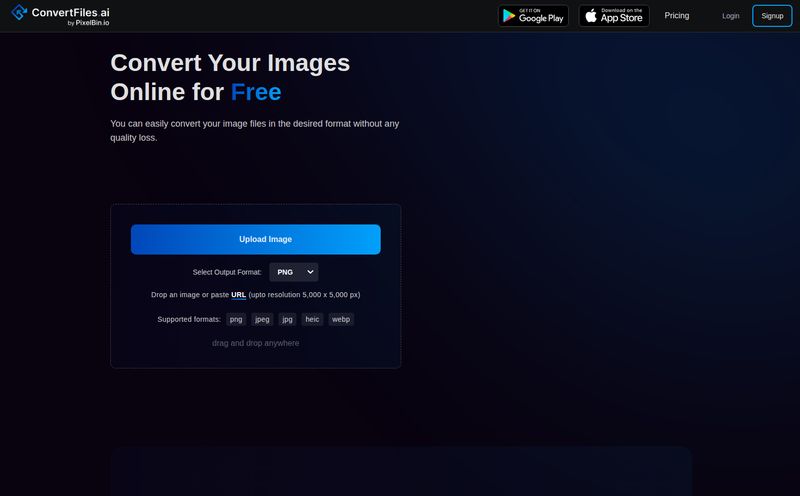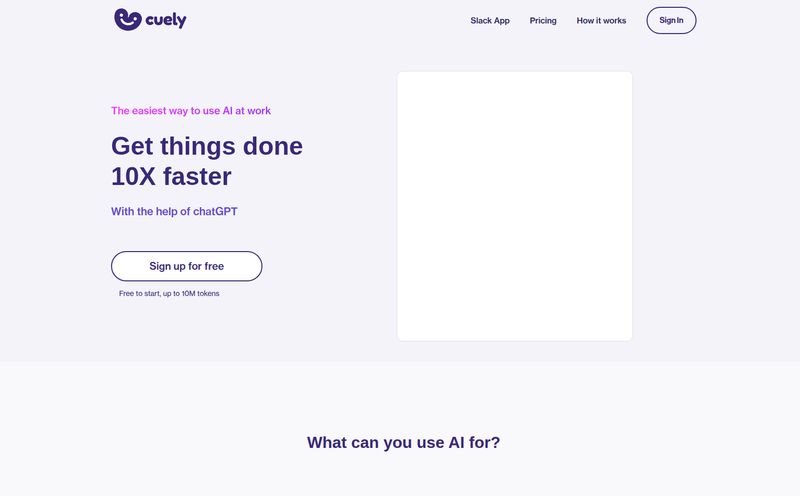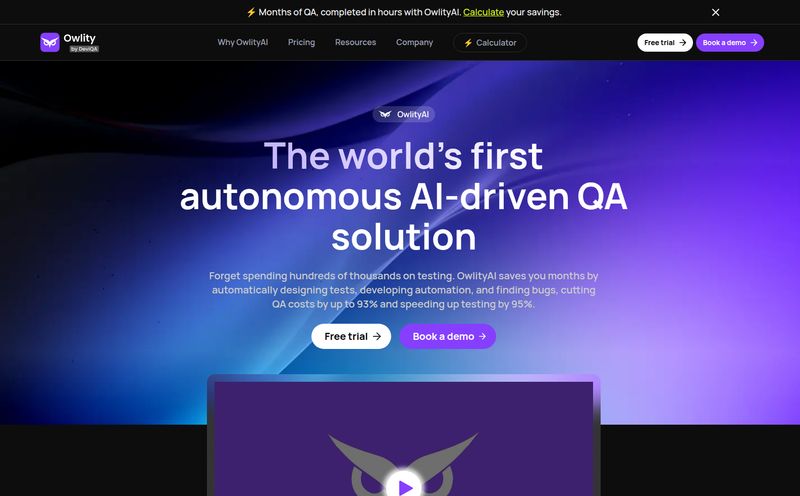Let me paint a picture. It’s 3 PM on a Tuesday. The end-of-quarter reports are due, the sales team is furiously closing deals, and suddenly… an entire chunk of your workflow just grinds to a halt. Orders aren’t processing. The invoicing system is throwing up weird errors no one’s ever seen before. Panic sets in. You’re now in full-on firefighting mode, pulling people away from their actual jobs to figure out what tiny, invisible cog in the massive IT machine just decided to break.
Sound familiar? If you’ve spent any time in operations, IT, or management, you're probably nodding your head. We spend so much of our time being reactive. We wait for the fire alarm to go off before we grab the extinguisher. For years, this has just been... the cost of doing business. But what if it wasn't?
I recently came across a platform called Application Traffic Control (ATC), and it’s one of those ideas that feels so obvious in hindsight. It’s a tool built on the premise that you shouldn't have to wait for things to break to fix them.
So, What on Earth is Application Traffic Control?
In the simplest terms, ATC is an AI-powered system designed to watch over your business processes. But it’s not just watching. It’s predicting. Think of it less like a security camera that records a break-in and more like a seasoned watchman who notices the loose window latch a week before the burglary happens.
It digs into the execution of your business processes, from order-to-cash to customer support ticketing, and uses AI to spot deviations and inefficiencies that are often completely invisible to traditional monitoring systems. These are the silent killers of productivity—the small, recurring hiccups that, when added up, cost a fortune in wasted time and resources.
The best analogy I can think of? It’s like an air traffic controller for your business operations. It sees all the planes (your processes), knows their flight paths (the correct workflow), and can predict a potential collision or delay long before the pilots are even aware of a problem. It then helps guide them to a safe resolution. It’s proactive, not reactive.
It's Not Your Grandpa's Monitoring Software
Now, some of you might be thinking, “I already have monitoring tools. I have APM dashboards and log analyzers.” And that’s great. I love a good Grafana dashboard as much as the next guy. But most of those tools are built for a different purpose.
They tell you when a server's CPU is maxed out or when an application throws an error. They tell you what already happened. ATC is playing a different game entirely.
The Predictive AI at its Core
The real secret sauce here is the AI-powered failure prediction. The system learns what your business processes are supposed to look like when they're running smoothly. It analyzes patterns, timings, and data flows. Over time, it gets incredibly good at spotting the subtle signs that precede a failure. A process that usually takes 3 seconds is now taking 3.8 seconds. An employee consistently skipping an optional-but-important field in a form. These aren't system crashes, so they don’t trigger alarms. But they are indicators of a deeper issue, and ATC flags them before they snowball into a real problem.

Visit Application Traffic Control
One Dashboard to Rule Them All
One of the biggest headaches in modern business is the lack of a single source of truth. The sales team has their data, finance has theirs, and IT has a whole other set of metrics. ATC aims to fix that by providing end-to-end control and real-time dashboards that give a transparent, objective view of how a process is actually executing across different departments. No more finger-pointing or debates based on gut feelings. The data is right there, showing you exactly where the bottleneck is.
The Tangible Wins of Using ATC
Okay, cool tech is great, but I'm an SEO and traffic guy. I care about results. What does this actually do for a business? What's the ROI? This is where it gets interesting.
A Fatter Wallet and a Happier Team
First off, the efficiency gains. By catching problems early, you're not just preventing catastrophic failures; you're also streamlining your daily operations. This means maximizing operational efficiency, which is just a fancy way of saying your teams can get more done with less frustration. And let’s be honest, that directly translates to cutting expenses. When you're not paying your highly skilled IT support staff to investigate routine, preventable issues, you save a ton of money. Not to mention, your employees are probably a lot happier when their tools just... work.
Dodging Compliance Bullets and Building Trust
Here's a big one that often gets overlooked: minimizing compliance risks. Many industries have strict rules about how processes must be executed. ATC helps ensure that employees are following those rules, creating an audit trail and flagging deviations. This is huge for finance, healthcare, and any other regulated field. On top of that, consistent, reliable processes strengthen brand loyalty. Customers don't care about your internal IT drama; they just want their orders shipped and their issues resolved quickly. A smooth operation builds trust.
Let's Get Real: The Potential Hurdles
No tool is a magic wand, and I believe in being upfront about potential challenges. Some people might argue that a system like this is too complex or invasive. And there are a few things to consider before jumping in.
For one, ATC requires integration with your existing IT systems. This isn't a simple browser extension you install and forget. It needs to tap into your business applications to get the data it needs. This means you’ll need some cooperation from your IT department. Second, while the dashboards are meant to be intuitive, there's likely a learning curve. Getting the most out of this kind of data-rich platform may require some training for your team. Finally, its effectiveness hinges on the accuracy of the AI models. Garbage in, garbage out, as they say. The quality of the predictions depends on the quality and volume of the data it's fed. It's a powerful engine, but it needs the right fuel.
The Million-Dollar Question: What's the Price Tag?
I looked all over the ATC site, and you know what I found? Nothing. No pricing page, no neat little tiers labeled "Basic, Pro, and Enterprise." And honestly, that's not surprising.
This is standard practice for sophisticated, enterprise-level B2B platforms. The cost is almost certainly dependent on factors like the number of processes you want to monitor, the volume of transactions, the complexity of your IT environment, and the level of support you need. Your best bet is to reach out to their team directly through the "Meet ATC" contact form on their website to get a custom quote. Don't expect a $49/month plan.
Your Burning Questions About ATC
Is ATC just for large enterprises?
While it seems geared towards larger organizations with complex processes, a mid-sized business with critical workflows could also see significant benefits. The key factor is process complexity and the cost of failure, not just company size.
How does it monitor employee activity without being 'Big Brother'?
The focus isn't on watching what an individual employee is doing minute-by-minute. It's about monitoring the health of the process. It tracks data flow and task execution, not individual keystrokes or screen time. The goal is to identify process flaws, not to micromanage people. It’s about helping employees by fixing the system they work within.
What kind of IT systems can ATC integrate with?
The documentation doesn't specify a complete list, but platforms like this are typically built to integrate with major ERPs (like SAP, Oracle), CRMs (like Salesforce), and other core business software through APIs and other connectors.
How long does it take to see results with ATC?
You'll likely see some initial insights quickly as it starts mapping your processes. However, the predictive capabilities will get stronger over time as the AI model gathers more data and learns the unique patterns of your business. I'd imagine you'd start catching meaningful deviations within the first few weeks or months.
Is the AI difficult to manage?
Most modern AI-powered platforms are designed to be as user-friendly as possible. The AI does the heavy lifting in the background. The user's job is to interpret the insights presented in the dashboards and take action, not to be a data scientist.
What's the difference between ATC and a standard APM tool?
APM (Application Performance Monitoring) typically focuses on the health of the software application itself—server response times, database query speed, error rates. ATC focuses on the health of the end-to-end business process, which may span multiple applications and departments. APM tells you the web server is slow; ATC tells you the customer onboarding proccess is broken because of a data-entry delay in one department that affects three different applications down the line.
Final Thoughts: A Proactive Future?
For me, the concept behind Application Traffic Control is a sign of a larger shift in the industry. We're moving away from the old break-fix model and towards a more intelligent, predictive, and proactive approach to managing our business operations. The idea of preventing problems before they impact customers or derail internal projects isn't just a nice-to-have; it's a massive competitive advantage.
It's not about replacing humans. It's about augmenting them. It's about giving them a tool that can see around corners and handle the mind-numbing task of watching for tiny cracks in the foundation, so they can focus on building a stronger house. And in today's chaotic market, that might just be the most valuable thing of all.
Reference and Sources
- For more on improving business processes, Gartner offers a wealth of resources on the topic: Gartner Glossary - Business Process Improvement (BPI)
- To understand the real-world impact of system failures, reports on the cost of IT downtime provide some stark figures: TechTarget - The true cost of data center downtime



